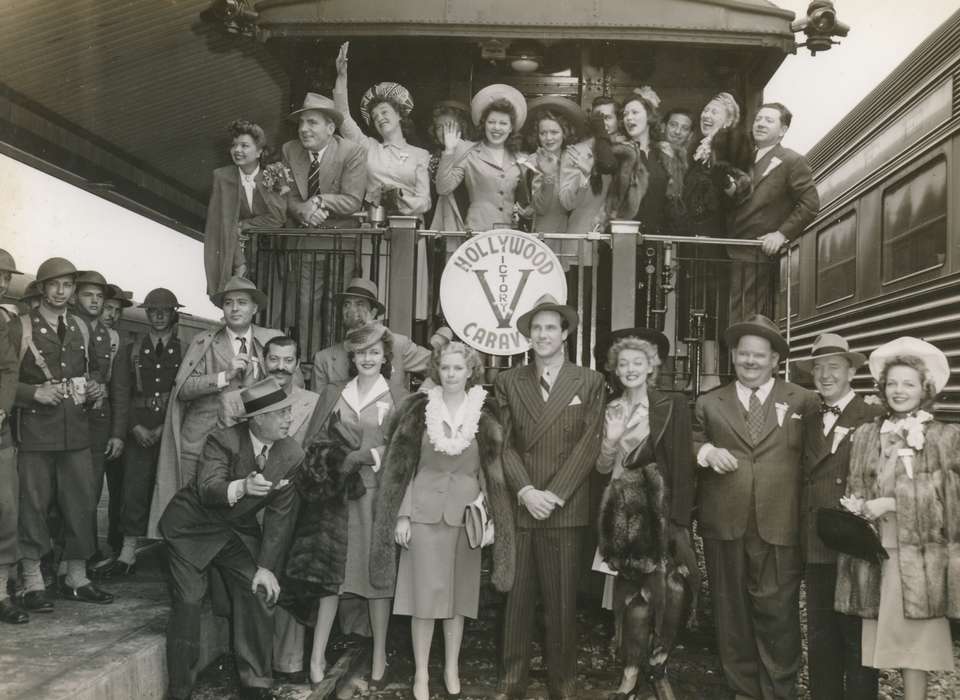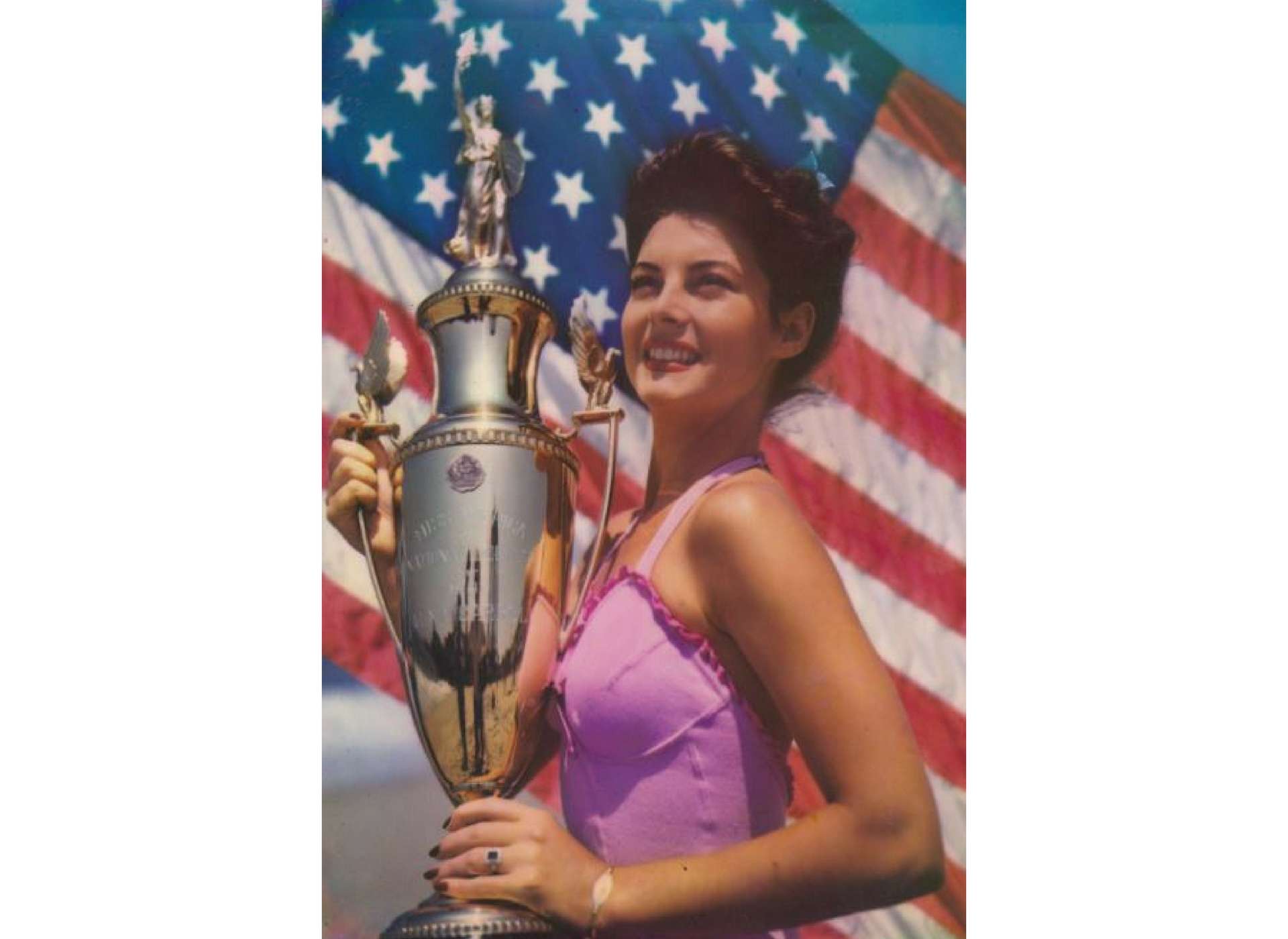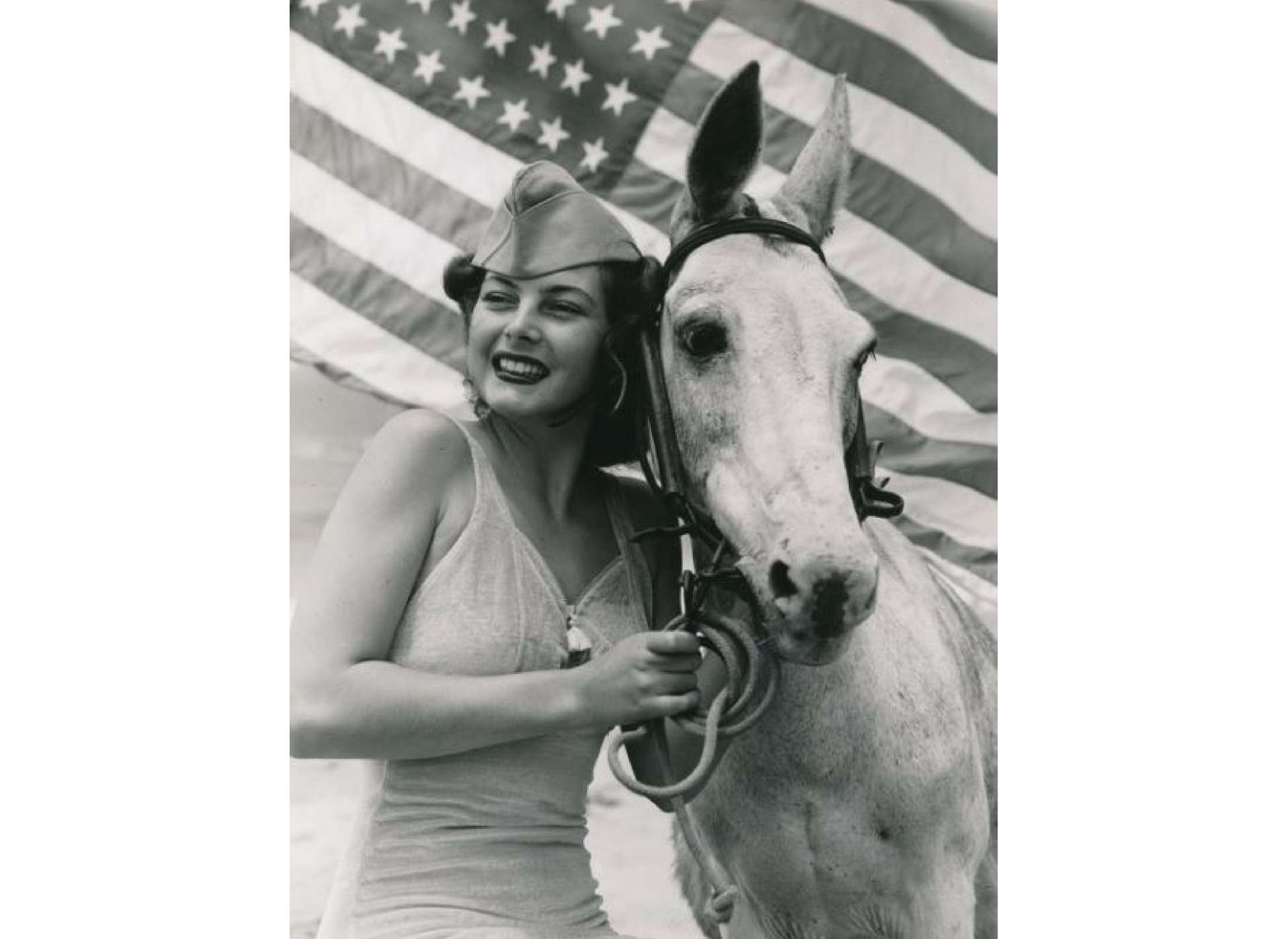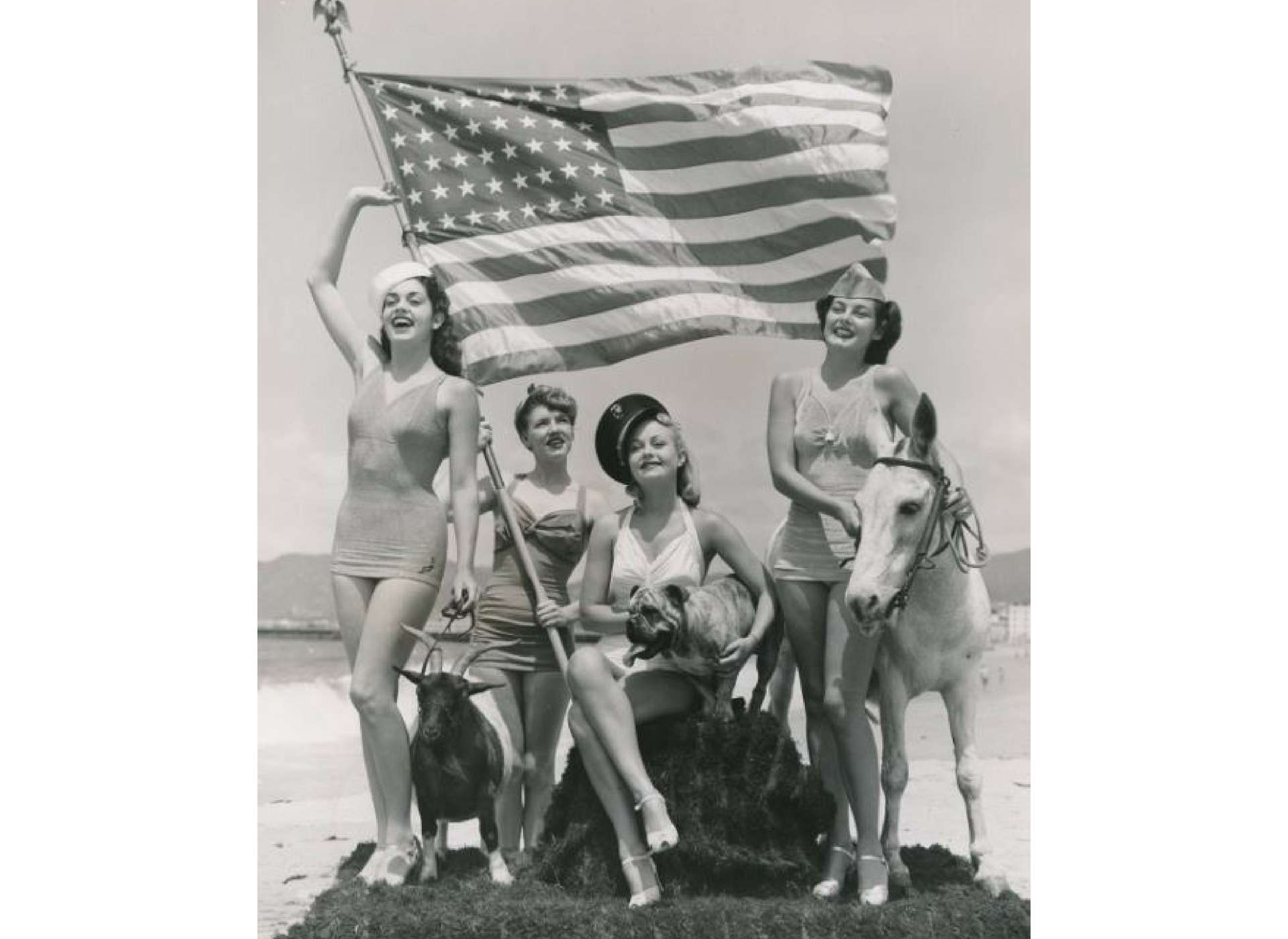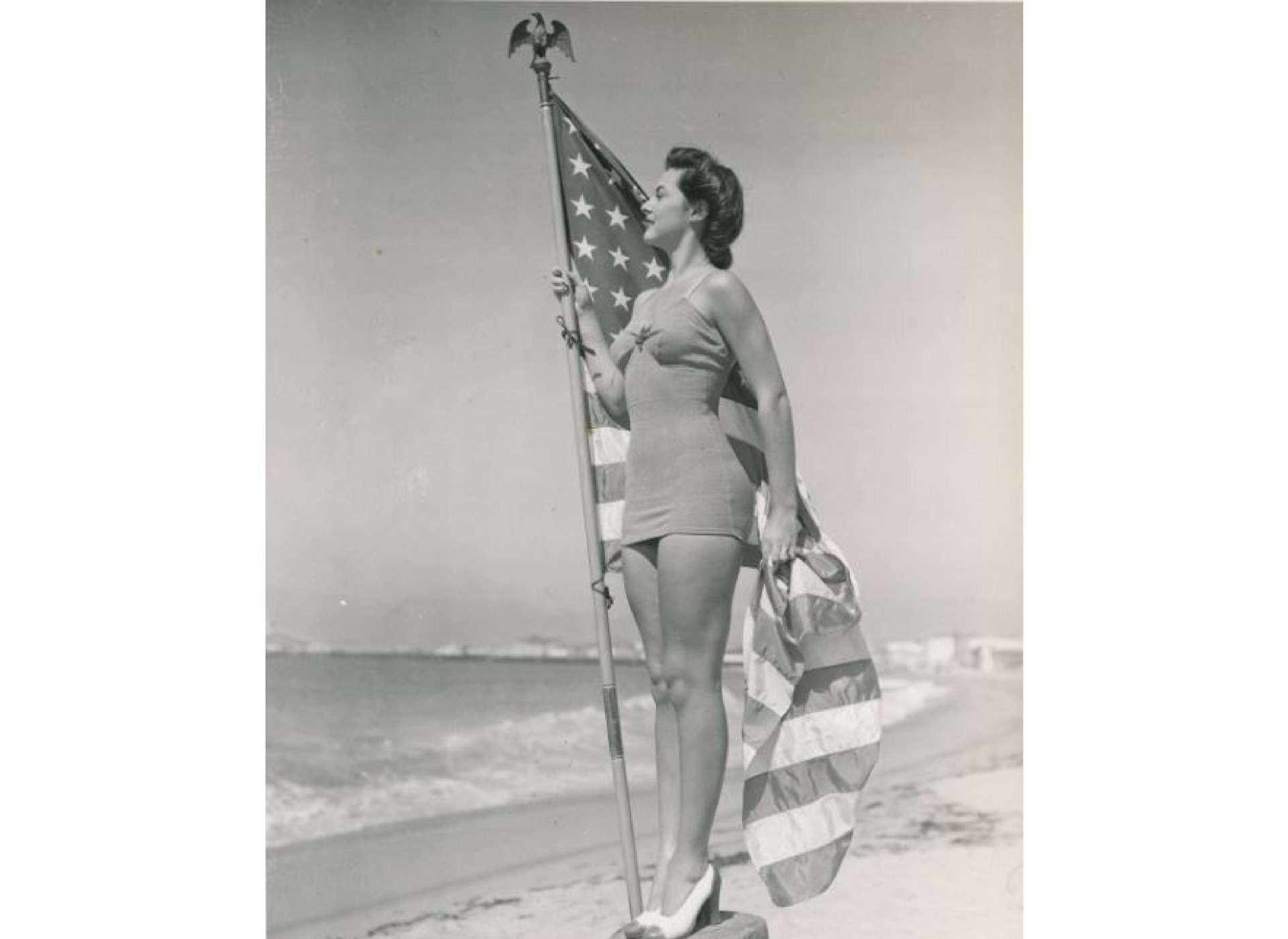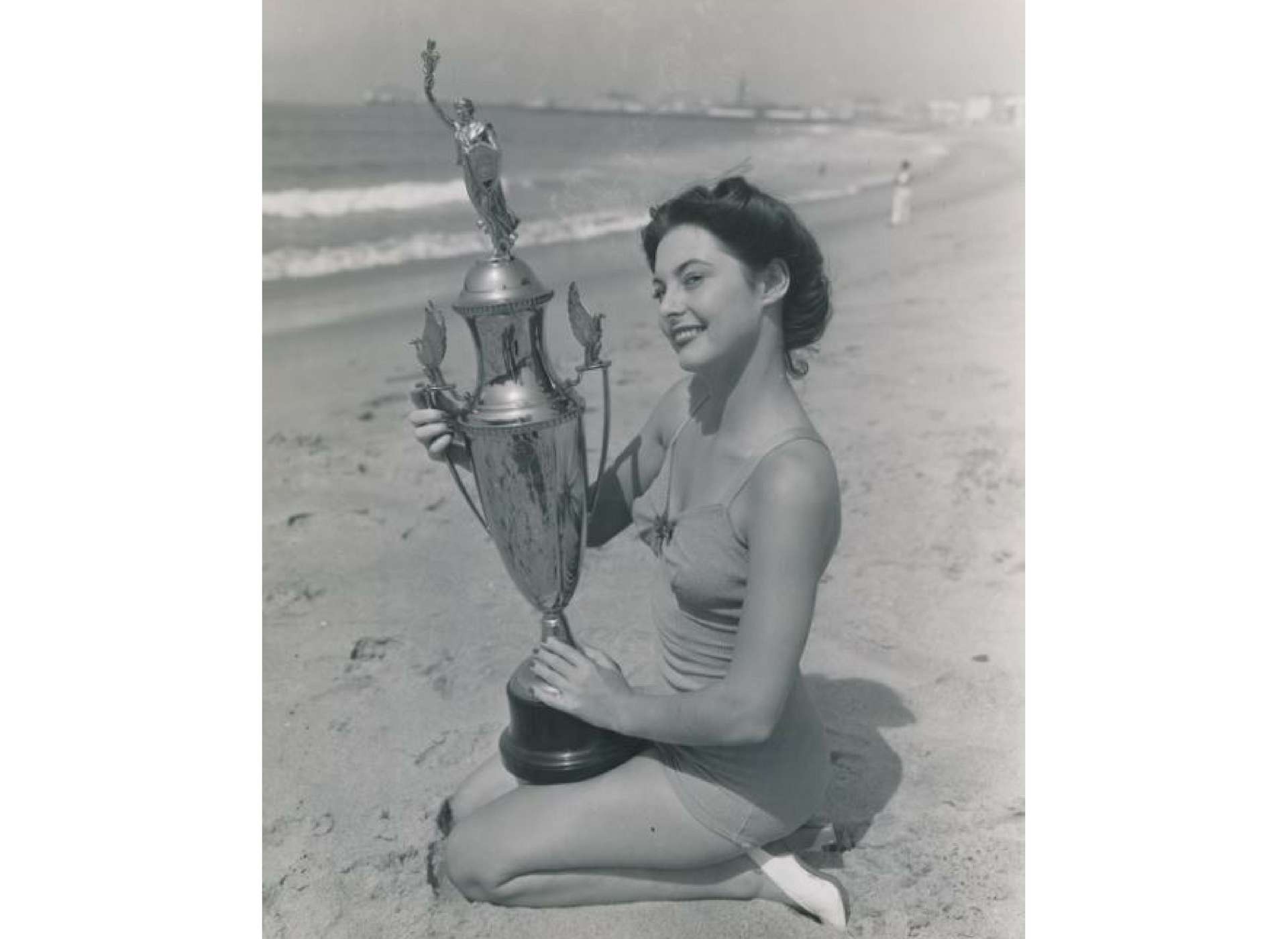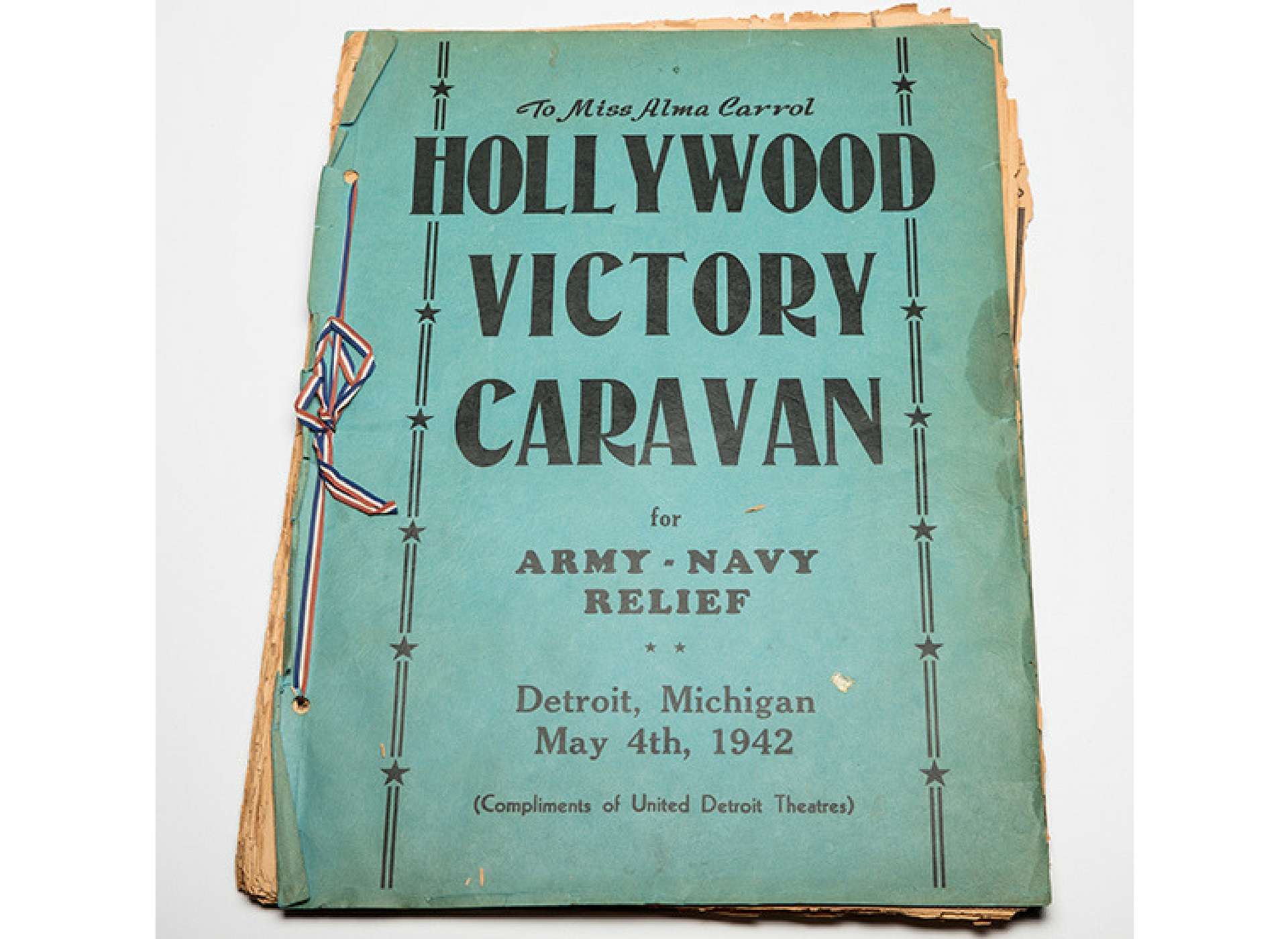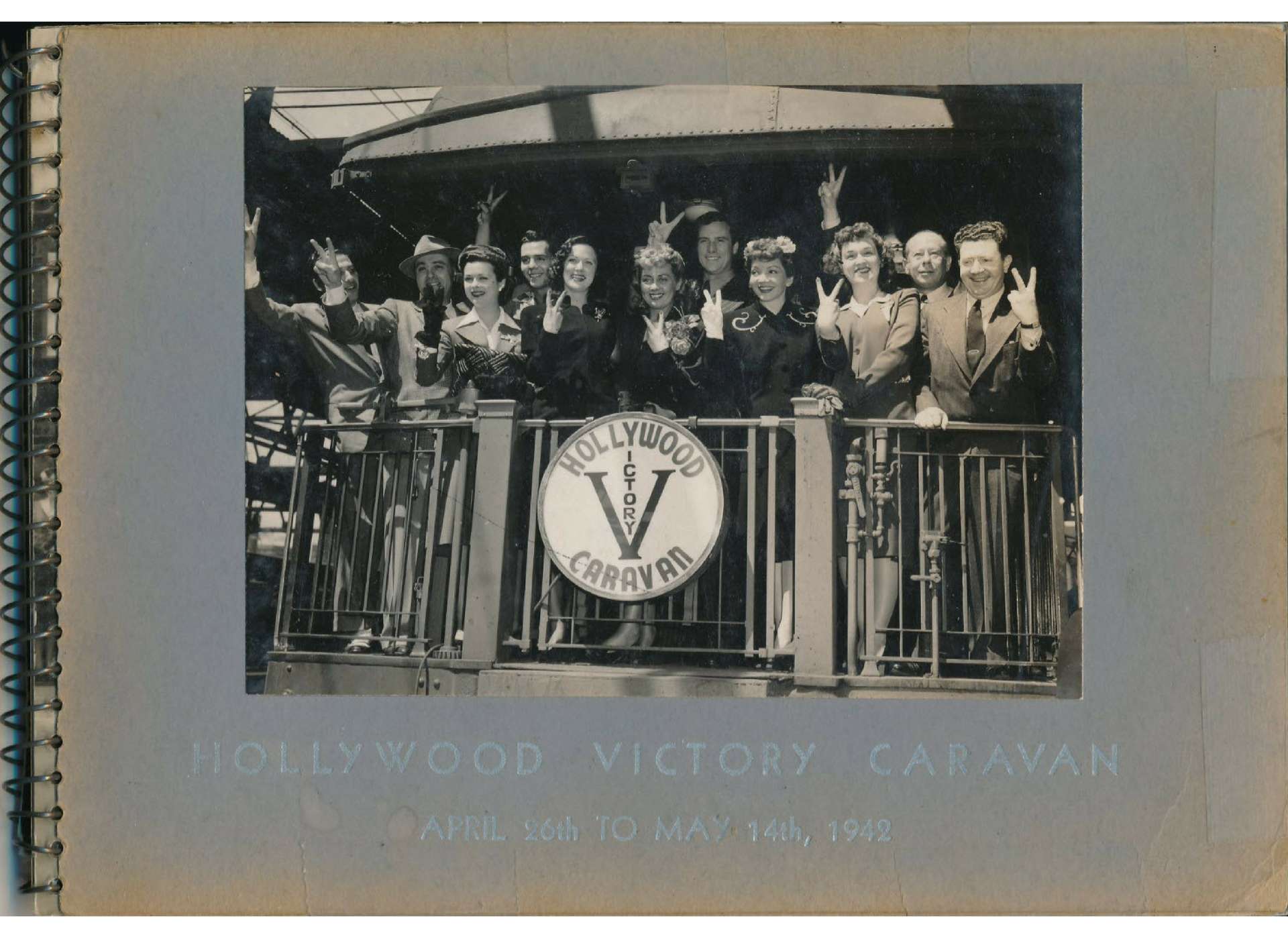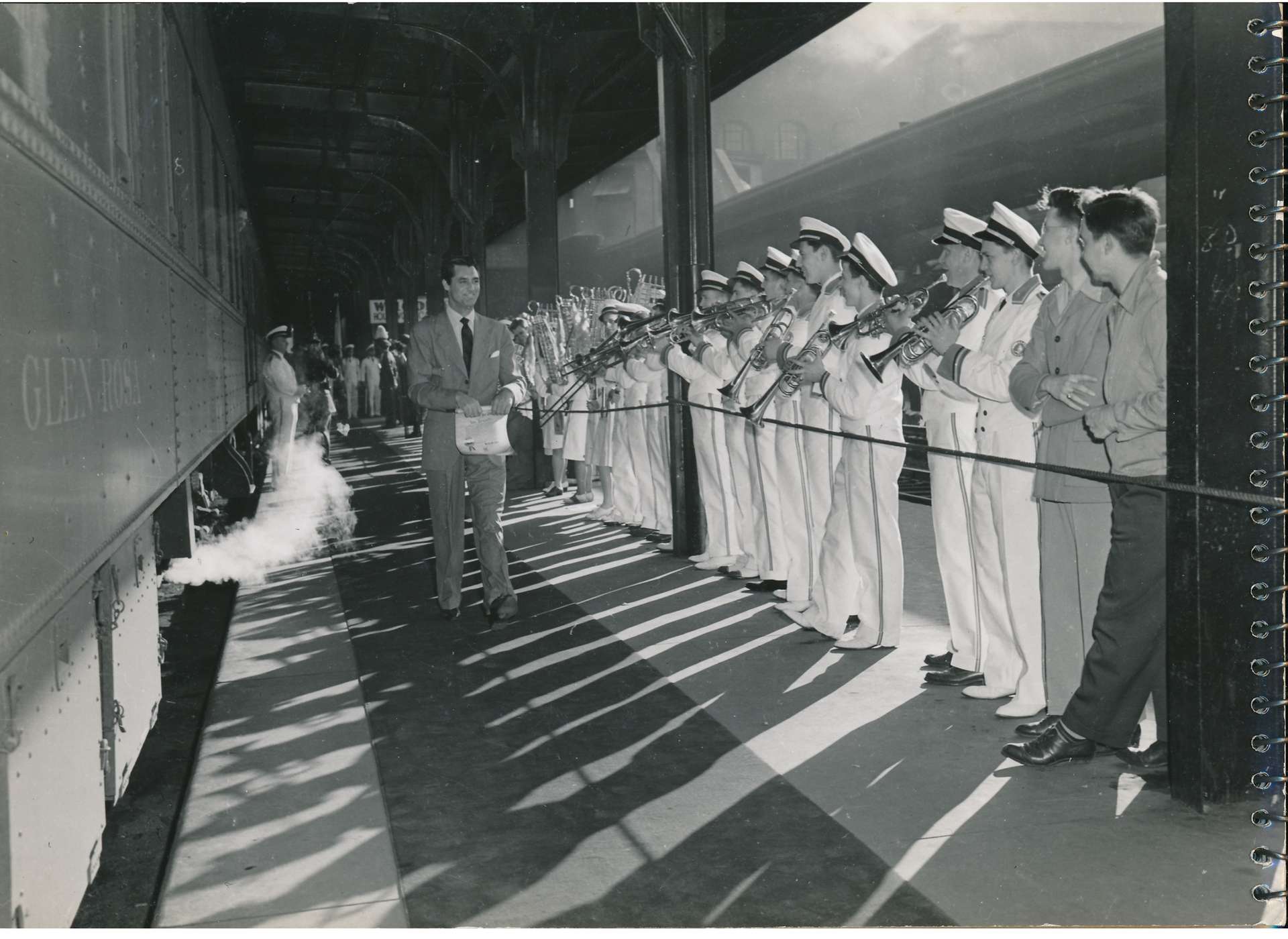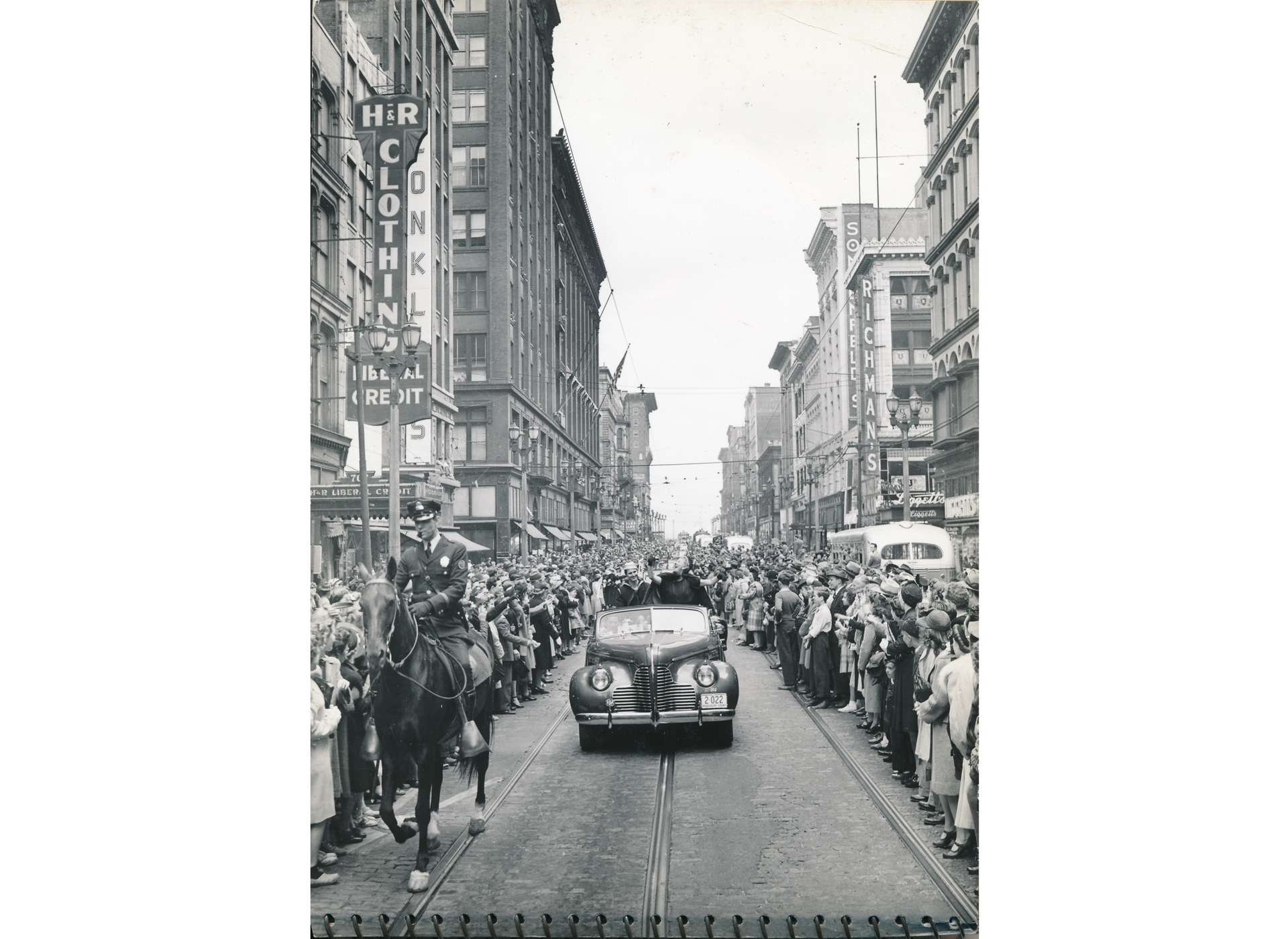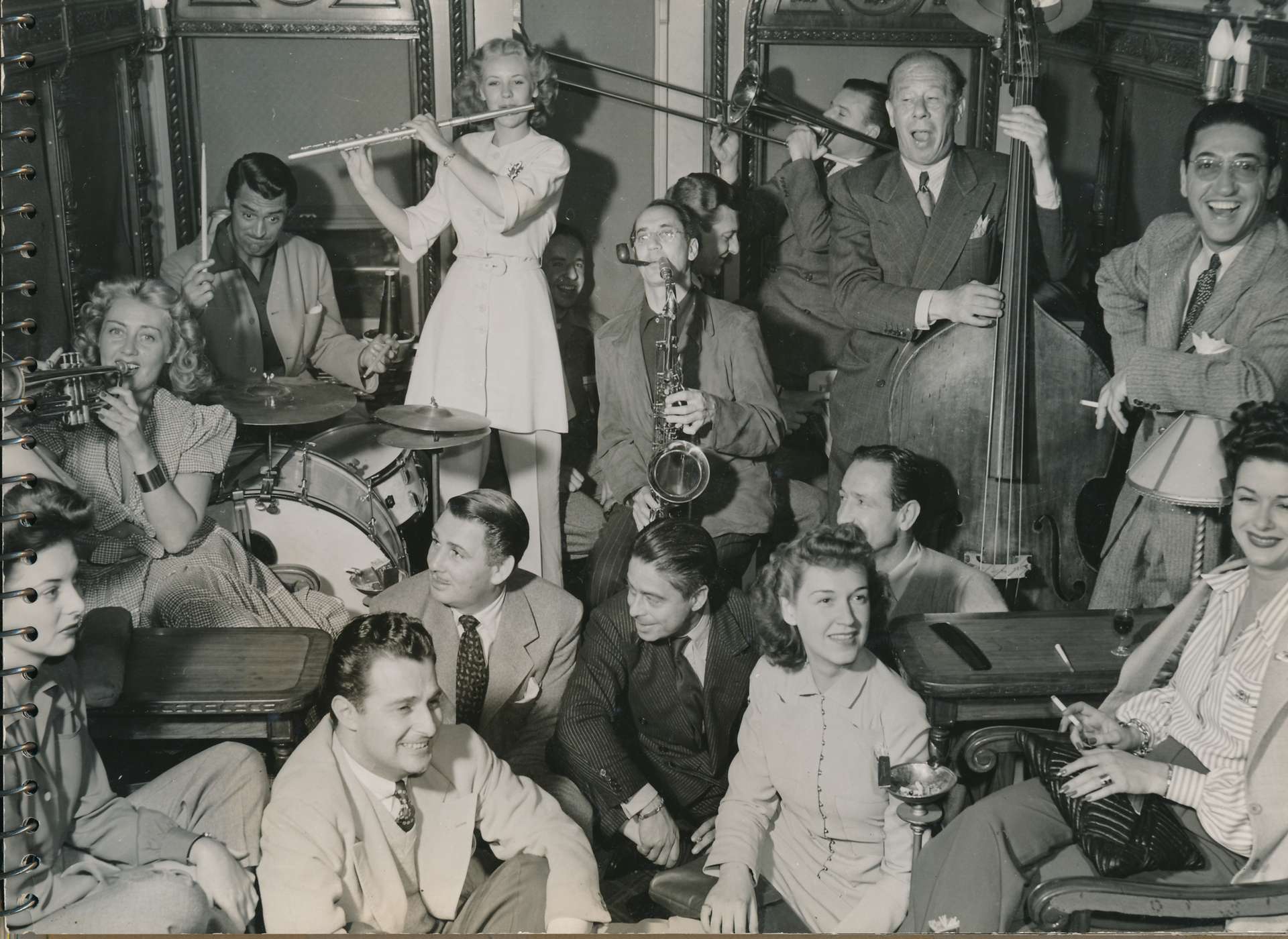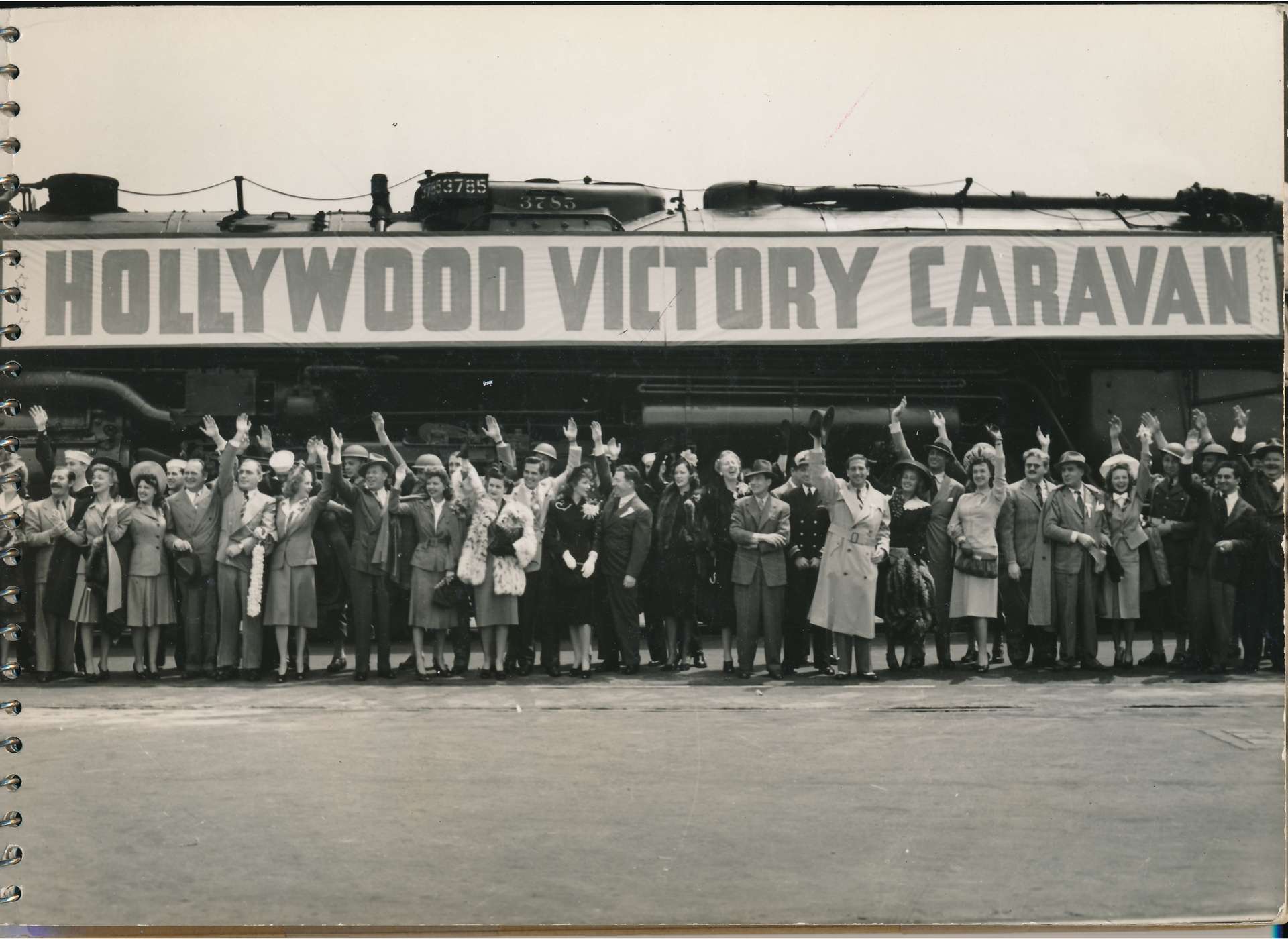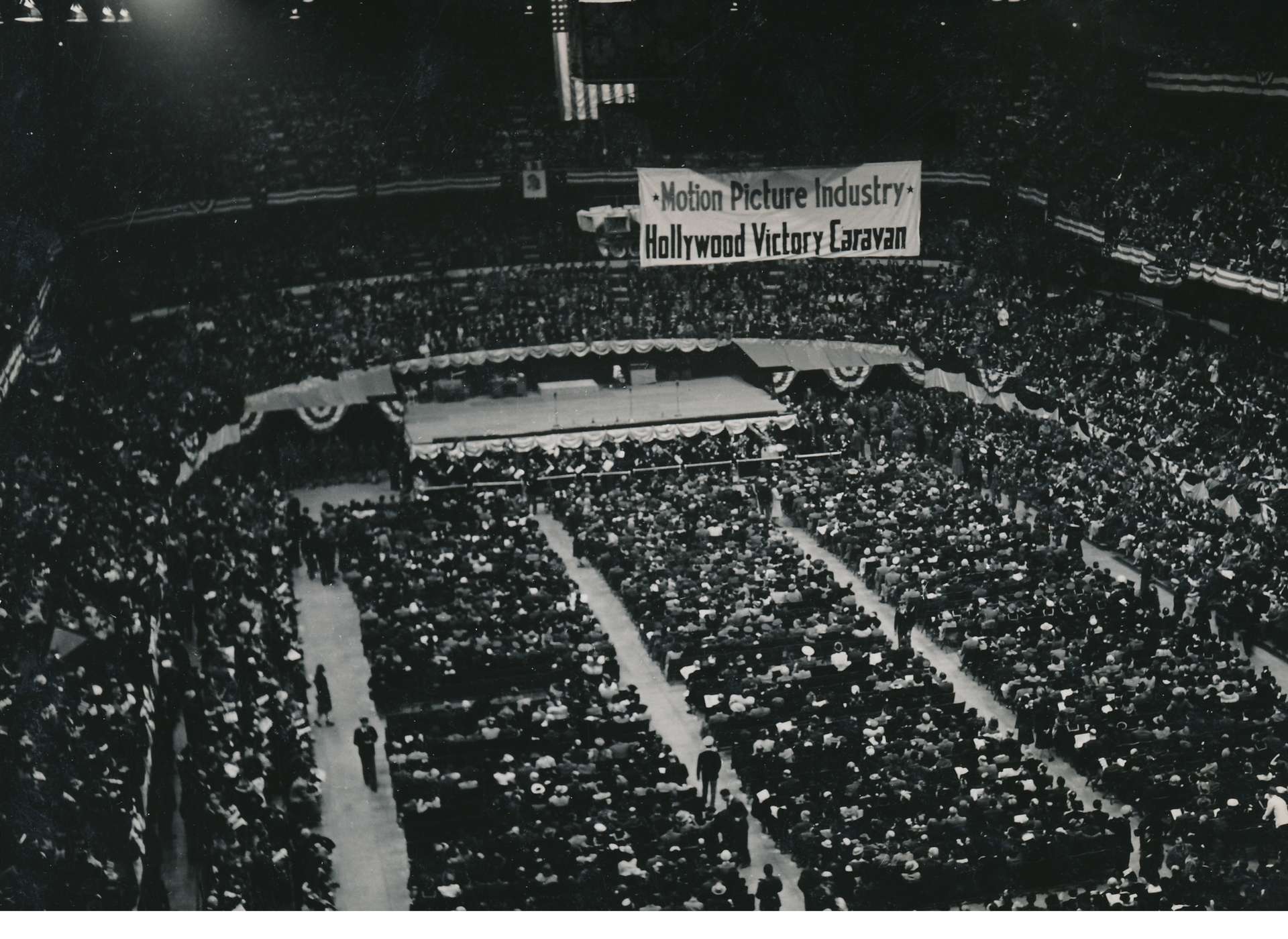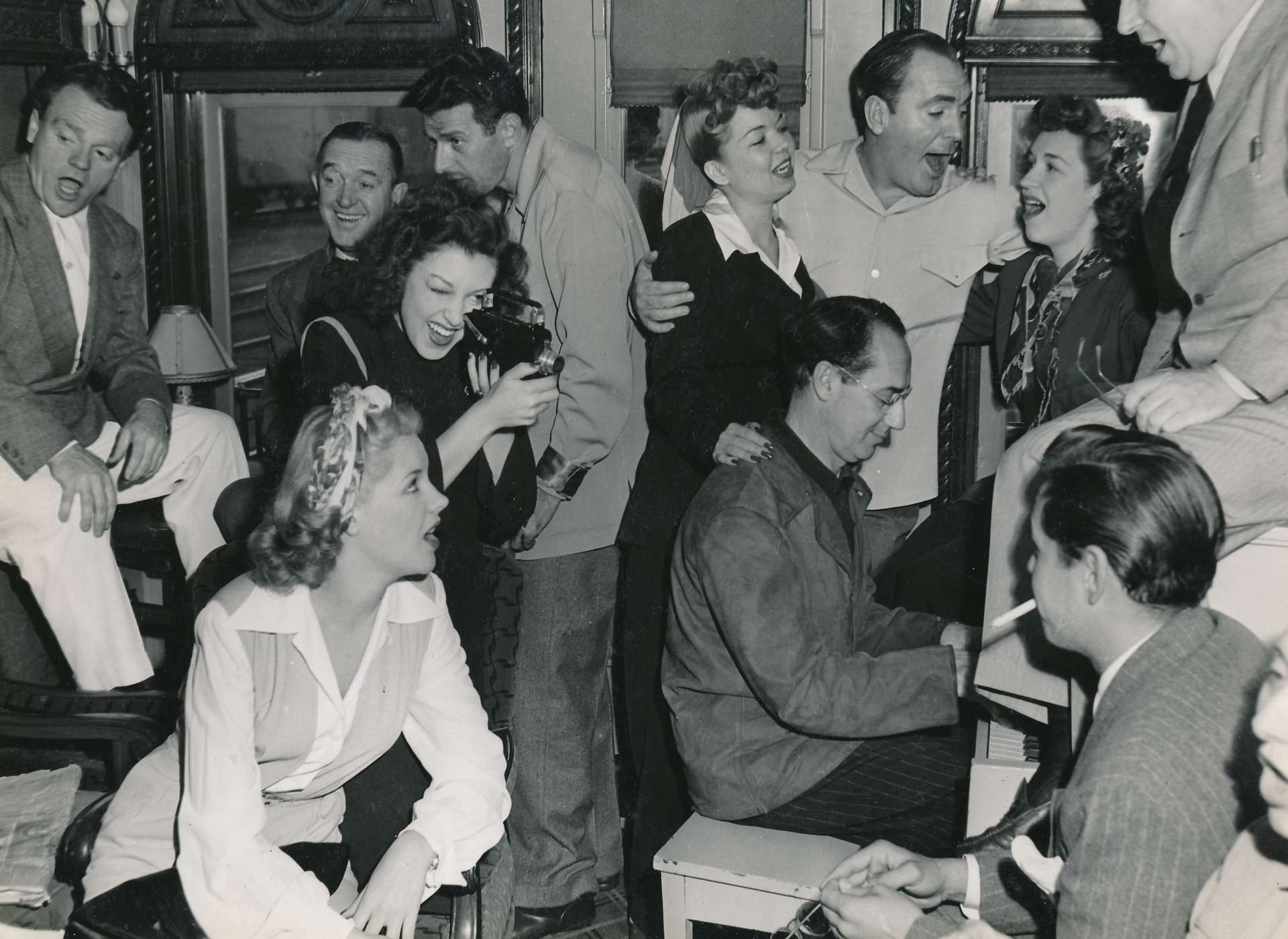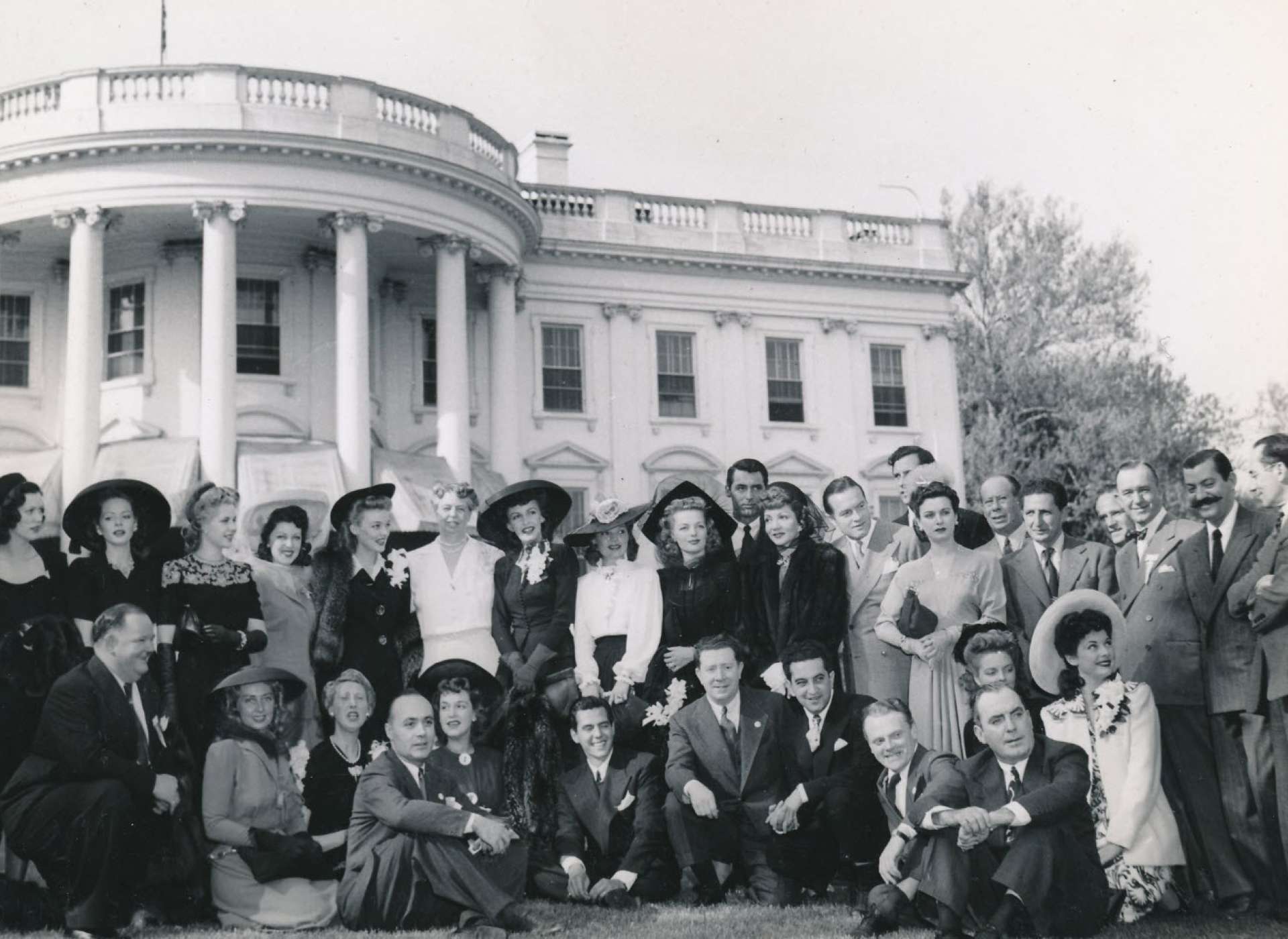“The Hollywood Victory Caravan was an idea of the U.S. Treasury Department—a trainload of fifty Hollywood names making whistle-stops across the country to sell war bonds. They had no trouble getting stars; who in Hollywood had the guts to tell the IRS he was going to be out of town?” – Bob Hope from I Was There.
In order to finance the global fighting that was World War II, fund-raising ventures took almost any form imaginable and were an ever-present part of daily life during the war. The Hollywood Victory Caravan was one of the earliest large-scale celebrity wartime fund-raising efforts. In April and May 1942, more than 50 stars toured 14 cities via railcar, putting on over 300 performances. When the performers left Los Angeles on April 26, 1942, the youngest among them was the starlet Alma Carroll.
Carroll began her movie industry work at age three in 1927 in a silent Our Gang short. As a girl, she studied dance alongside Shirley Temple. She later modeled with the famous photographer Tom Kelley and won "Miss America of National Defense" at age 17 and began to tour the country's military bases. She signed with Columbia Studios on her 18th birthday, continuing her studies at University High School in Los Angeles under the guidance of a studio tutor while working on various film and publicity tours.
In March 1942, Carroll was asked to take part in the Hollywood Victory Caravan, joining some of the biggest stars of the time including Bob Hope, Cary Grant, Laurel and Hardy, James Cagney, Humphrey Bogart, Barbara Stanwyck, Bing Crosby, and Desi Arnaz. On April 30, 1942, the Victory Caravan made a special stop at the White House for a tea party with First Lady Eleanor Roosevelt.
-

Miss America of National Defense Alma Carroll.
-

-

-

-

Along the way, the stars had very little downtime. Even on the train, they rehearsed for the show. The train travel had been donated by the Santa Fe Railroad and included special cars outfitted with two portable dance floors and two pianos. On arrival in each town, the stars would often parade from the train station to that evening’s hotel. The performances themselves, variety-style shows, lasted roughly three hours with both Bob Hope and Cary Grant acting as Masters of Ceremonies. Hope also joked: “Boy, what beautiful girls on that train. . . . I walked up to Irene Dunne and said, ‘Honey, remember me, Bob Hope?’ . . . She looked at me and said, ‘I don't remember the name . . . but the drool is familiar.’”Carroll was one of eight starlets who acted as background dancers and performers for the major stars on the revue. The starlets featured heavily in the finale of each performance, a showstopping "You're a Grand Old Flag."
Tickets for the show cost roughly $11, nearly $200 in today’s currency. The show was wildly popular and raised $800,000 for Army and Navy relief funds. Following up on the Hollywood Victory Caravan, Paramount Pictures produced a short film in 1945 for the Department of the Treasury and the War Finance Committee based on the spring 1942 tour, in which many of the revue performances can be seen.
Upon completion of the Victory Caravan, each performer was presented with a commemorative photo album and engraved press book of newspaper stories from each of the cities where they performed. Once home, Carroll resumed work at Columbia and appeared in films including Parachute Nurse, Submarine Raider, and Pardon My Gun. She was also assigned duties at the Hollywood Canteen, where she and other well-known stars served refreshments and danced and talked with servicemen. Carroll did not renew her contract with Columbia, but worked as an independent contract actress with various studios. Carroll’s connection with Bob Hope continued beyond the Hollywood Victory Caravan; throughout the war, she traveled and performed with Hope at military bases in California. She continued this work after World War II as well. Decades later, she accompanied her husband, renowned artist Bill Lignante, to sketch wounded servicemen in military hospitals in California, carrying on the connection with and tributes to those who served many years earlier.
-

Hollywood Victory Caravan press booklet presented to Alma Carroll. Gift of Alma Carroll, 2016.745.001
-

-

-

-

-

-

-

-

The Hollywood Victory Caravan on the White House lawn (Alma Carroll in kneeling at front right).
Kim Guise
Kimberly Guise holds a BA in German and Judaic Studies from the University of Massachusetts Amherst. She also studied at the Universität Freiburg in Germany and holds a masters in Library and Information Science (MLIS) from Louisiana State University. Kim is fluent in German, reads Yiddish, and specializes in the American prisoner-of-war experience in World War II.
Cite this article:
MLA Citation:
APA Citation:
Chicago Style Citation:
